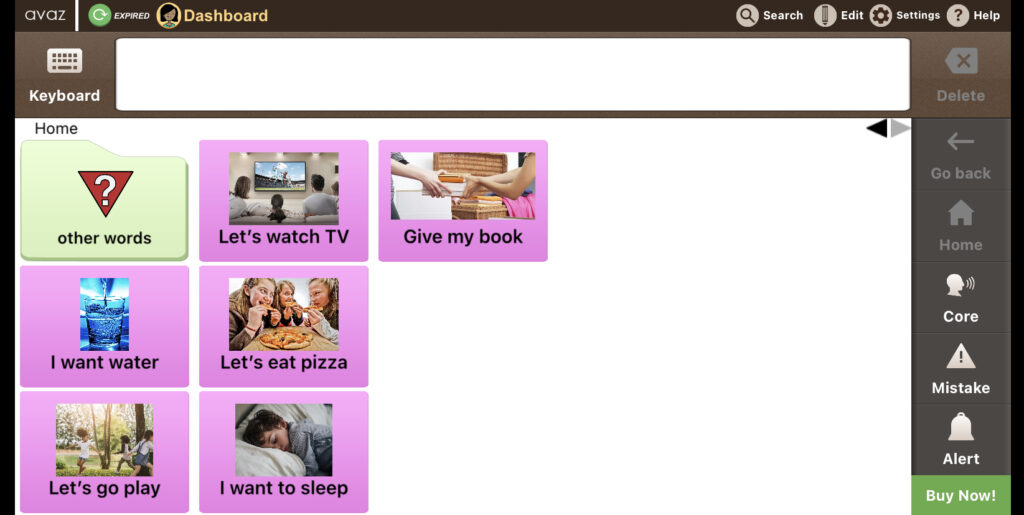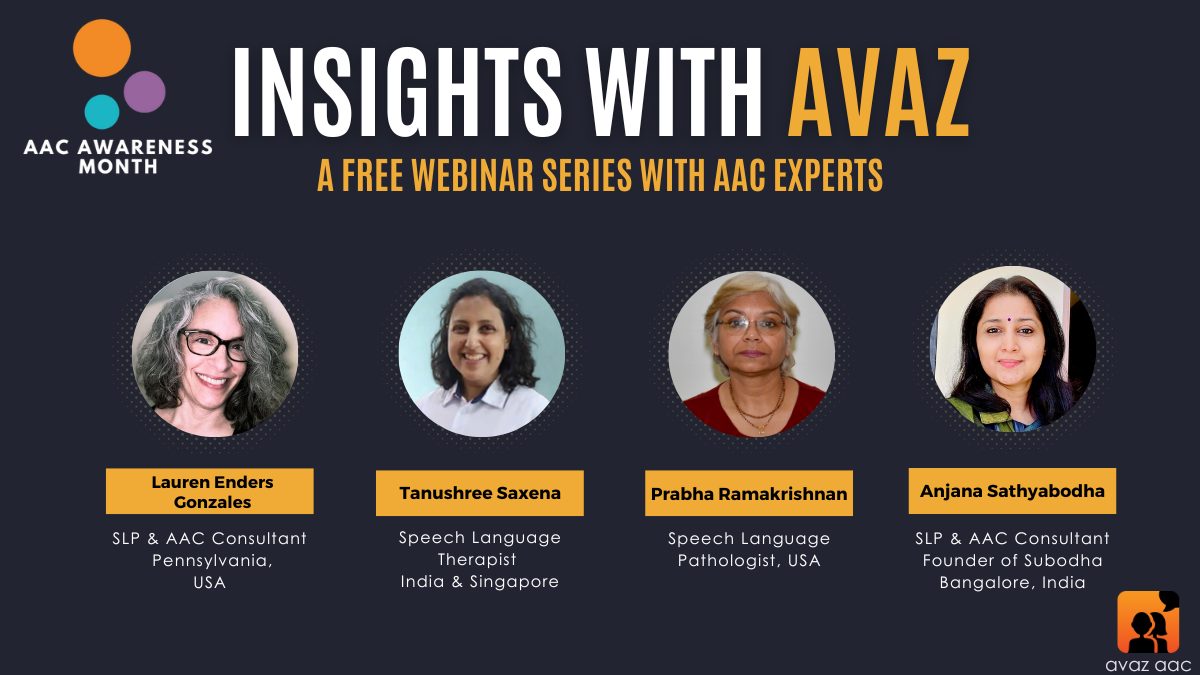It is very important to understand a learner’s language acquisition style before designing an intervention plan for them. In this article we look into a style of language acquisition called the Gestalt processing style. Read on to understand how we can effectively support children who learn in this style!
Language acquisition in most children happens with learning and acquiring single words as units first followed by combining them into sentences. This style is called analytical processing. Here the child analyses the statements they hear, breaking them into single words.
Many children on the autistic spectrum employ a different language acquisition style, known as Gestalt processing style. The internal structure of a statement doesn’t make much sense to children who are Gestalt Processors. Instead, they acquire language as chunks or scripts. For them, the smallest unit of comprehension is not words. Even if they use single words, they may have difficulty in combining them with other words in a meaningful way.
Stages in Gestalt Language Acquisition
The Gestalt language acquisition typically has the following stages:
- Echolalia: repetition of chunks of words or words out of context. Read more about Echolalia here.
- Mitigation by mixing and matching shorter segments from the chunks: For example, if a child keeps repeating “Let’s go play” and “Want some water” during stage 1, in stage 2 they may break down these two chunks and say, “Let’s go some water”.
- Understanding that words are units: In this stage they would be able to single out words, understand that words can stand alone, and would try combining them with other words
- Self-generated language: moving beyond the words they pick up from others and forming their original sentences and language
- Making sense and usage of simple grammar in communication
- Making sense and usage of complex grammar in communication
The initial Echolalia may seem meaningless. But for Gestalt Language Processors, it is a real attempt to communicate. Our failure to acknowledge that attempt might frustrate them. This may even discourage them from attempting to communicate at all.
How to Support Gestalt Processors
Children who acquire language through gestalt processing need adequate attention and support. Here is a step by step guide to do this!
Acknowledge
The first step is to make the child feel acknowledged. Even if we don’t understand anything, we should initiate acknowledgement by nodding, smiling and repeating what they said. There is an extra layer of information beneath the Echolalia that we need to decode. Paying careful attention to the non-verbal cues while we acknowledge can give us some more information on what the child is trying to communicate. The process is very unique to every child.
Mitigate
We should facilitate interaction through comments, affirmations and reflective questions as opposed to commands, prompts and wh- questions. This approach has proven to mitigate Echolalia. Instead of controlling the interaction and expecting a specific response, we should aim to let the child initiate and lead the conversation. Letting it flow freely motivates the child to communicate. This also enables the communication partner to tune into the child’s natural mode of playing and sustaining the conversation.
Gestalt language processors are known to pick up scripts/chunks from highly dramatic circumstances. Knowing the context is important in mitigating such Echolalia. There are categories of Gestalt scripts that are easy to mitigate. Such gestalts can be used to replace the ones that the child is currently using. Eventually, the easy to mitigate gestalt script can be worked upon.
Using AAC
AAC devices are currently modelled through the lens of an analytical language processor. However, there are ways in which we can use AAC with Gestalt Language Processors. A lot of children on the autism spectrum are Gestalt Language Processors. An AAC system to may be just the thing they need to communicate.
Paying attention to what they do with an AAC system, their stimming habits and patterns can give us a cue that they want to communicate. Caretakers can use AAC with Gestalt Language Processors by inputting the scripts they try to mimic with a voice over and a visual display of what it means. This may be one way to give and get feedback on what the child is trying to communicate.


Speech therapies designed around Analytical language Processors may seem to work with Gestalt Processors but it eventually ends up making them feel stuck with a single word and not being able to combine them with others. As always, the bottom line is to motivate the child to communicate, and any form of communication is always a good sign.
Conclusion
While enabling communication, it is important for us to understand a learner’s style of language acquisition. Once we do that, we can effectively support them. Gestalt language processors have a unique way of acquiring language. With a little bit of attention and support, we can easily enable Gestalt learners to thrive!
Try Avaz AAC. To know more about the features you can request a demo here.
Access GLP infographics here.
Reference
- Marge Blanc – Natural Language Acquisition on the Autism Spectrum: The Journey from Echolalia to Self-Generated Language, 2012




Another Eye opener
Yes ..language acquisition is gestalt, not in split mode ..
Can you please more insights and ideas about this ..
And some ideas on how normal language development takes place..
Initially it happens gestalt and moves on to next stage or only children with language difficulties perceive language in gestalt??
Human brains acquire language Analytically (acquiring single words first) and/or as Gestalts (chunks of words/sounds). Echolalia is an imitative behavior which we commonly seen in children who are learning to speak. Imitation is a critical and necessary milestone of social learning and language development. The imitative form of echolalia, that is part of analytic language acquisition, is not distinguishable from the echolalia that persists in Gestalt Language Processors (GLP). The only difference in GLPs is that the mitigation of echolalia into single or double words may not happen sooner and as automatically as it is with neurotypical children. The echolalia lasts longer for them. Please read more here: https://avazapp.com/blog/echolalia-outside-the-spectrum/
So for a child stuck in stage 1, you need to provide more mitigatable gestalts that they can eventually break down in stage 2.
Can you provide some examples that we can use for a child stuck in stage 1?
Hello Sarah!
The mitigatable gestalts are highly contextual. The goal is to provide the child with gestalts that are comparatively easier to break down later. Some examples are, “Let’s get some ice cream”, “Let’s get going”, “Let’s get out of the car” or “Get me water”, “Get me food”, Get me my toys”. This way, the chunk “Let’s get” or “Get me” loses its rigidity in the original phrases and becomes easier to mitigate and mix and match. This information is from Marge Blanc’s book – ‘ Natural Language Acquisition on the Autism Spectrum: The Journey from Echolalia to Self-generated Language’.
You can also check out the ‘ AAC and Gestalt Language Processing’ Facebook group created for GLP parents, professionals, and others for GLP related information and also get queries answered by the experts.
Hope this helps! 🙂